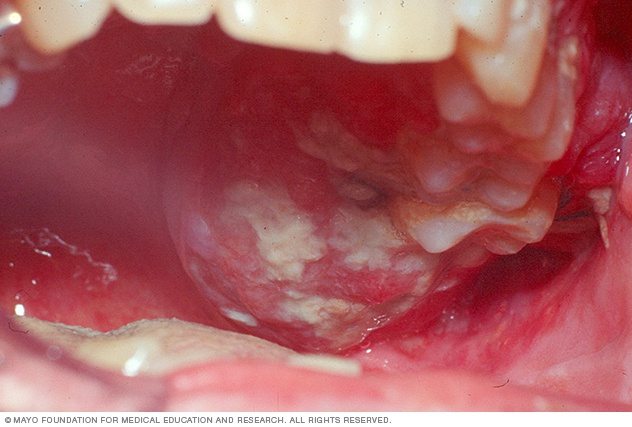ADVERTS
Oral cancer affects the front portion of the throat, that is, the entire visible part of the mouth up to the lips.
The most common location is the floor of the mouth, under the tongue, the side of the tongue and the soft palate. It is easily visible to the naked eye, both by the patient and by a dentist or doctor.
ADVERTS
Smokers, people who drink large amounts of alcohol or chew tobacco, make up the majority of the risk group.
The most common histological type of this type of tumor is the epidermoid type, such as the skin and cervix.
Inspection is the best exam. A doctor carefully examines the inside of the mouth looking for whitish (leukoplakia) or reddish (erythroplakia) lesions. As in the cervix, cells can be removed by scraping these altered regions and examined under a microscope for signs of malignancy.
ADVERTS
Pre-malignant lesions are already well described and early diagnosis of this type of tumor is quite possible.

The main risk factors are: Age; Personal History and Sex.
Mouth cancer prevention includes: Avoid excessive alcohol consumption; avoid excessive use of pipes and cigarettes; avoid exposure to the sun without protection; avoid dentures that are ill-fitting in your mouth; have good oral hygiene, brushing your teeth 4 times a day, preferably after every meal; have frequent dental check-ups; maintain a healthy diet, rich in fruits and vegetables; carry out a self-examination of the mouth, looking for any type of change such as wounds, swelling or stains.
Treatment
Treatment is done through radiotherapy, chemotherapy or surgery. These methods are used alone or in combination. The treatment chosen depends on the location of the tumor and its severity, in initial lesions.
